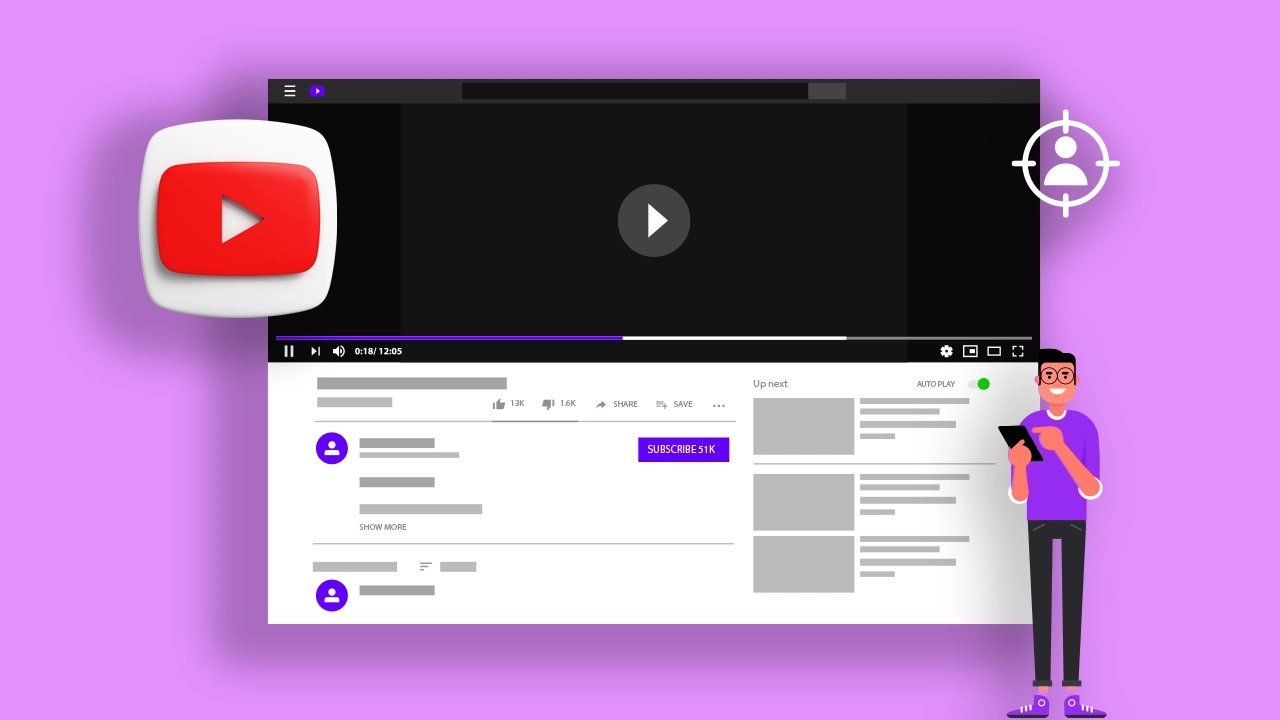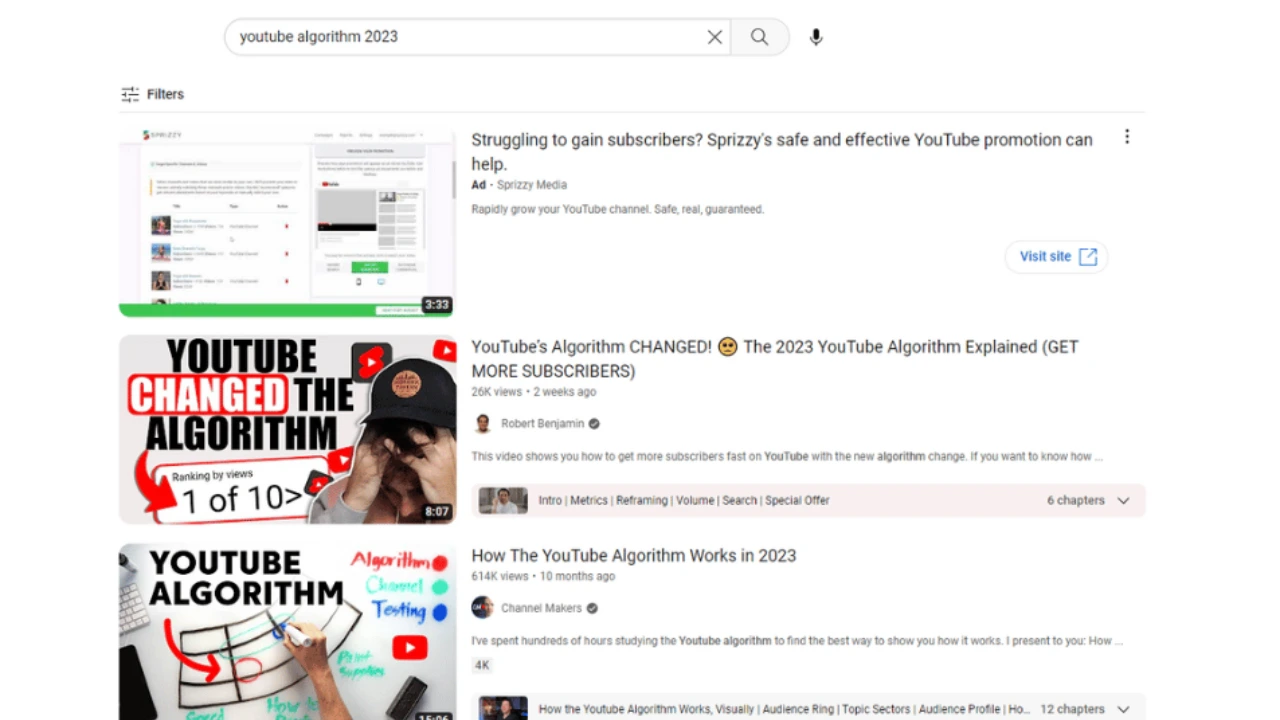
YouTube Optimization 2023: YouTube SEO and YouTube Algorithm
Google definitely comes to mind when you think of SEO. Given that Google is the most potent search engine available, it is simple to understand why. Google is by no means the sole search engine, though. Effectively, YouTube is the second-largest search engine on the planet (behind only Google).
Introducing SEO For YouTube
When it comes to reaching a broad audience, video material is an unmatched tool, and its use is on the rise as new, more sophisticated technology becomes available. People have generally always appreciated—and occasionally even relied upon—video content.
Video has only become more prevalent, and anyone can quickly and easily access YouTube from almost anywhere in the world.
How can marketers differentiate their material from other companies in a world when so many people are posting videos to the internet and there is an enormous amount of video content currently available online that is growing daily?
You and your content team can beat out other video producers that aren’t utilizing video optimization strategies by using these fundamental and advanced approaches.
Research Target Keywords

Source: YouTube screenshot
The first step in optimizing a YouTube video for YouTube’s search results, like optimizing a website for Google, is conducting keyword research.
You can make sure you’re producing and optimizing content that people are actually searching for by giving this phase of the YouTube SEO strategy priority.
Starting on YouTube itself, the keyword research process begins. The search box is a data mine because the autosuggestions are based on actual user searches.
When you begin typing a word or phrase associated with your specialization, a list of popular search terms appears:
Click on a recommendation you think will make a good video, and you’ll see which channels are already ranked.
If you know where to look, you can learn a lot from these channels. Start by looking at their most well-liked videos.
When you go to a channel’s page, you’ll notice right away that a section is devoted to its best-performing material.
Given that you’re receiving ideas from videos that have been shown to be popular with viewers, this is a wonderful place to find keyword inspiration.
Getting Featured On Search Results

Source; Markus Winkler
When sorting through search results, YouTube’s search algorithm gives the following four considerations top priority:
- Relevance: Include elements like the video’s title, hashtags, description, and the actual material.
- Engagement: includes elements like the number of likes, comments, subscribers, turned-on notifications, and watch time
- Quality: includes signs that can be used to identify channels that are knowledgeable, reliable, and authoritative about a particular subject.
- Personalization: In order to provide each user with the most pertinent results, YouTube considers their search and viewing history.
When users search for news, politics, or medical or scientific information on YouTube, the search engine’s algorithm gives authoritative content a higher priority. YouTube is more likely to consider signals like relevance, freshness, or popularity when deciding which videos to display in other categories, like music or entertainment.
Be careful not to compare YouTube SEO to Google SEO, as Google’s algorithm does not take user interaction signals into account.
The Google algorithm doesn’t care if users click on the results it displays. Regardless of how many people visit those pages, it strives to deliver the most relevant results. That’s not the case with YouTube SEO.
The goal of YouTube’s algorithm is to deliver the best results. YouTube takes into account how other viewers interacted with the videos when they were displayed in search results to decide which videos are the most gratifying.
- Did they watch the whole way through?
- They liked the video, right?
- Did they post a comment?
- Did they become channel subscribers?
- Have they activated notifications?
- Did they watch any other videos on the channel?
YouTube Optimization: Understanding YouTube Algorithm

Starting with your channel title can help you improve your YouTube profile. If you choose not to use your company name, make sure the name you choose accurately represents your brand. Next, choose a high-resolution image for your avatar that accurately represents the identity of your channel and works well as a thumbnail on many platforms.
Your video file should be renamed with a focus keyword.
Before you even publish your video to YouTube, you should add the keyword in your video file as the first place to use it. Why? There are only so many places you can safely enter this keyword on your video’s watching page once it has been released, as you’ll discover in the instructions below, and YouTube can’t actually “see” your video to determine how relevant it is to your target keyword. However, when you upload a movie to YouTube, it can read the file name and all the accompanying code.
Organically incorporate your keyword in your video title.
In the video title, organically incorporate your keyword. One of the first things our eyes are pulled to when searching for videos is the title. The title should be not only intriguing but also succinct and clear because that is frequently what prompts the user to click to watch your movie.
Although your video’s title heavily utilizes your keyword, it also helps if it closely corresponds to what the audience is looking for. According to Backlinko’s research, videos with an exact keyword match in the title only slightly outperform those without one.
Improve the description of your video.
The official character restriction for YouTube video descriptions is 1,000 characters, according to Google. Although it’s acceptable to occupy all of that space, keep in mind that your audience most likely came to this page to watch a video rather than read an essay.
Remember that YouTube only shows the top two or three lines of text, or roughly 100 characters, if you decide to create a longer description. Viewers must then click “show more” to view the entire description after that.
Regarding the video’s optimization, adding a transcript wouldn’t harm it, especially for viewers who have to watch it without sound.
Put your videos in categories
Choosing a category is another approach to grouping your video with related content on YouTube so it appears in different playlists and is seen by more viewers who fit your target audience. Once you post a video, you can categorize it under “Advanced options.”
It might not be as straightforward as it seems. In fact, to decide which category each video belongs in, YouTube’s Creator Academy advises marketers to go through a thorough process.
Add a unique thumbnail image to the result link for your video.
The primary image that viewers see while navigating through a list of video results is your video’s thumbnail. This thumbnail, together with the video’s title, informs viewers about the video’s subject matter, which might affect how many clicks and views your video gets.
Although you can always choose from the auto-generated thumbnail options provided by YouTube, we strongly advise creating a personalized thumbnail.
Final Takeaways
Contrary to popular assumption, longer YouTube videos do better than shorter ones. When you enter any word or phrase into YouTube, the most popular videos are typically quite long.
The number of comments on your videos indicates to YouTube how well-liked they are. Similar to Google, YouTube gives popular content priority. One measure YouTube uses to determine what users like the best are comments.
Because they play automatically, playlists are a fantastic method to improve the amount of time people spend watching your channel. Consequently, a consumer might watch five or six of your videos rather than just one.
YouTube does not have the luxury of using backlinks and other signals like Google does to determine the quality of a piece of content. They rely on audience retention as a result.
Having said that, YouTube’s algorithm includes a number of ranking criteria in addition to audience interaction.
Subscribe to the kool newsletter
Case studies. Industry Updates. Inspiring Ideas.

